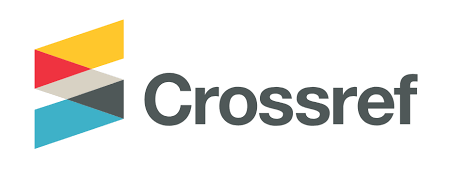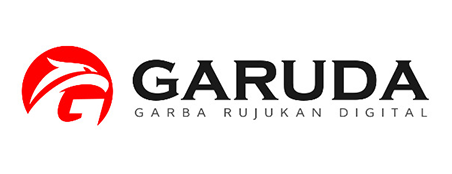EDUKASI PENGETAHUAN SWAMEDIKASI PENYAKIT KULIT SEBAGAI UPAYA UNTUK MENINGKATKAN KESEHATAN DI LINGKUNGAN PANTI ASUHAN WILAYAH KARTASURA
Keywords:
Pengetahuan, Penyakit kulit, Self-medicationAbstract
Skin is the outer layer of the human body that is directly adjacent to the environment and has a function as protection from several pathogens such as bacteria, fungi, and viruses and functions in defense. One of the problems that can arise even though the manifestation is not severe is skin disease. If skin diseases are not treated properly, they can become chronic diseases that are very disturbing to health. This community service aims to increase knowledge about self-medication of skin diseases in the environment of Santri Wisma Asuhan Yatim Nurul Huda Kartasura. This community service consists of activity survey stages, licensing, preparation, implementation and evaluation of activities. There is a pretest and posttest to measure the ability of students to knowledge of self-medication of skin diseases. Then a quantitative analysis was carried out which included a data normality test and a t-test for pretest and posttest. The results of community service showed that there were 33 students who participated in community service activities. With most participants having a high school education and all students have never received education about skin diseases. The average knowledge of students for pretest scores is 64.03 ± 13.04, while the average posttest score is 81.61 ± 7.99. There is a significant difference in pretest and posttest knowledge (p = 0.000).
Downloads
References
Asyari, N., Setiyono, A., & Faturrahman, Y. (2023). HUBUNGAN PERSONAL HYGIENE DAN SANITASI LINGKUNGAN DENGAN KEJADIAN SKABIES DI WILAYAH KERJA PUSKESMAS SALAWU KABUPATEN TASIKMALAYA. Jurnal Kesehatan Komunitas Indonesia, 19(1). Retrieved January 24, 2024, from https://jurnal.unsil.ac.id/index.php/jkki/article/view/6844
Begum, S., Md Nazmul, K., Haque, A. R., & Rahman Rahat, M. L. (2020). A Comparative Study Of Oral Ketoconazole Versus Itraconazole In The Treatment Of Tinea Versicolor. Community Based Medical Journal, 9(2), 26–33.
Bennadi, D. (2013). Self-medication: A current challenge. Journal of Basic and Clinical Pharmacy, 5(1), 19–23.
Byrd, A. L., Belkaid, Y., & Segre, J. A. (2018). The Human Skin Microbiome. Nature Reviews Microbiology, 16(3), 143–155.
Departemen Kesehatan RI. (2007). Pedoman Penggunaan Obat Bebas dan Bebas Terbatas. Departemen Kesehatan RI. Jakarta: Departemen Kesehatan RI.
Hartatik, & Safitri, S. W. (2021). Diagnosa Penyakit Kulit Menggunakan Bayesian Network. Journal Automation Computer Information System, 1(2), 131–140.
Husni, P., Putriana, N. A., & Saputri, F. A. (2018). Pemberian Pemahaman Mengenai Skabies Dan Upaya Pencegahan Skabies Di Desa Cibeusi, Sumedang, Jawa Barat. Jurnal Pengabdian Kepada Masyarakat, 2(3), 1–3.
Kemenkes RI. (2013). Riset Kesehatan Dasar 2013. Kementerian Kesehatan RI. Jakarta: Kementerian Kesehatan RI.
Kemenkes RI. (2018). Hasil Utama Riskesdas 2018. Kementrian Kesehatan RI.
Menteri Kesehatan. (1993). Peraturan Menteri Kesehatan Nomor: 919/Menkes/Per/X/1993 Tentang Kriteria Obat Yang Dapat Diserahkan Tanpa Resep Menteri Kesehatan. Menteri Kesehatan. Jakarta: Menteri Kesehatan.
Muafidah, N., Imam, S., & Darmiah. (2017). Hubungan Personal Higiene dengan Kejadian Skabies pada Santri Pondok Pesantren Al Falah Putera Kecamatan Liang Anggang Tahun 2016. Journal of Health Science and Prevention, 1(1), 1–9.
Pohan, A., & Kawilarang. (2022). Perbandingan Pewarnaan Periodic Acid Schiff (PAS) dan Gomori Methenamine Silver (GMS) Pada Pasien Tinea versicolor. Jurnal Mikologi Klinik dan Penyakit Menular, 1(1), 21–23.
Saputra, I. S. (2020). Angka Kejadian Scabies di Panti Asuhan di Indonesia (Skripsi).
Wardana, S. S. (2017). Hubungan Higiene Personal Terhadap Kejadian Tinea versicolor Pada Santri Pria Di Pondok Pesantren Darussa’adah Mojo Agung, Lampung Tengah. Universitas Lampung. Bandar Lampung: Universitas Lampung.
WHO. (2023). Scabies. WHO. Retrieved January 12, 2024, from https://www.who.int/news-room/fact-sheets/detail/scabies
Downloads
Published
Issue
Section
License
Copyright (c) 2024 EJOIN : Jurnal Pengabdian Masyarakat

This work is licensed under a Creative Commons Attribution-ShareAlike 4.0 International License.









